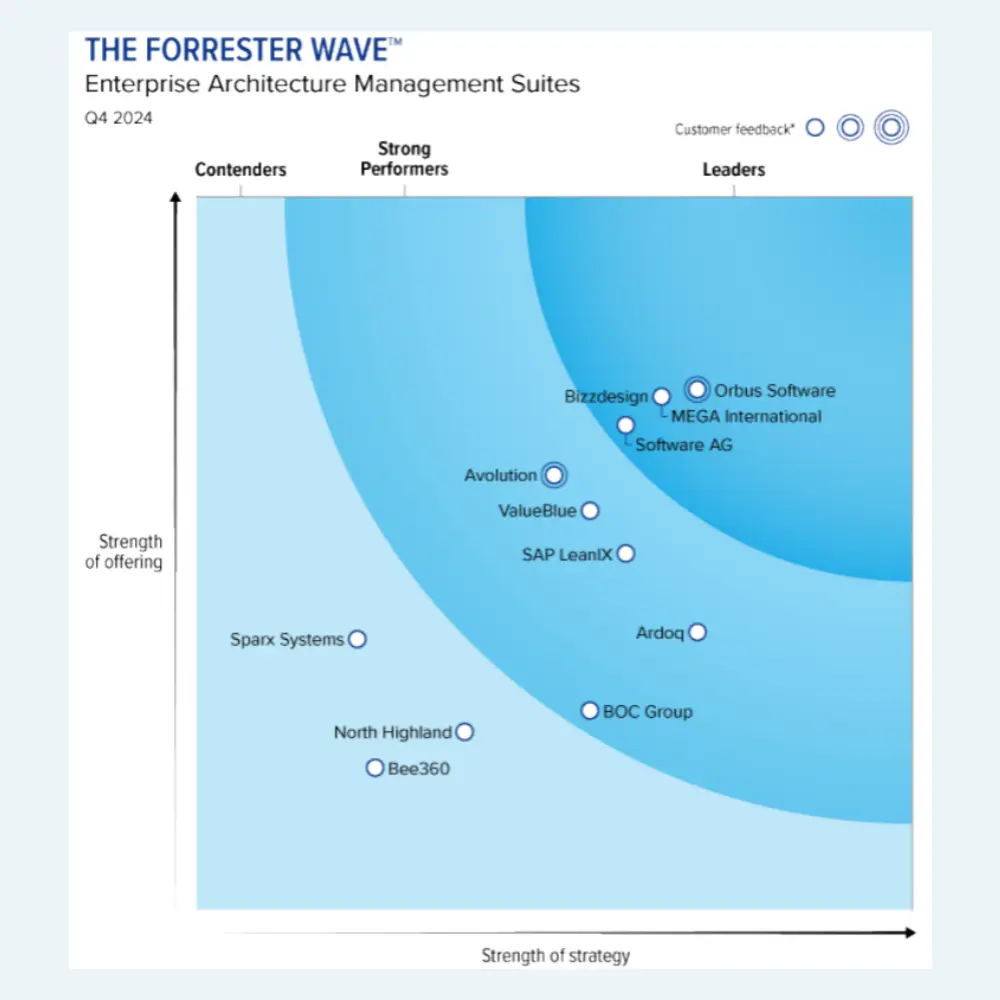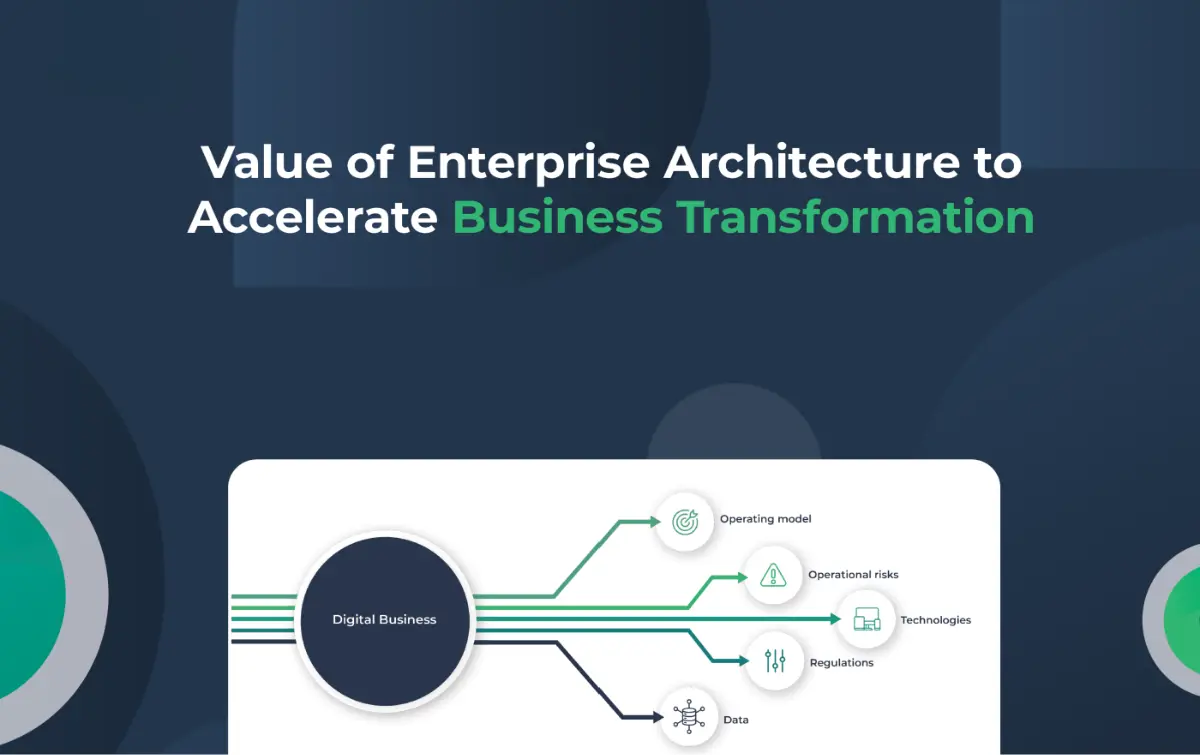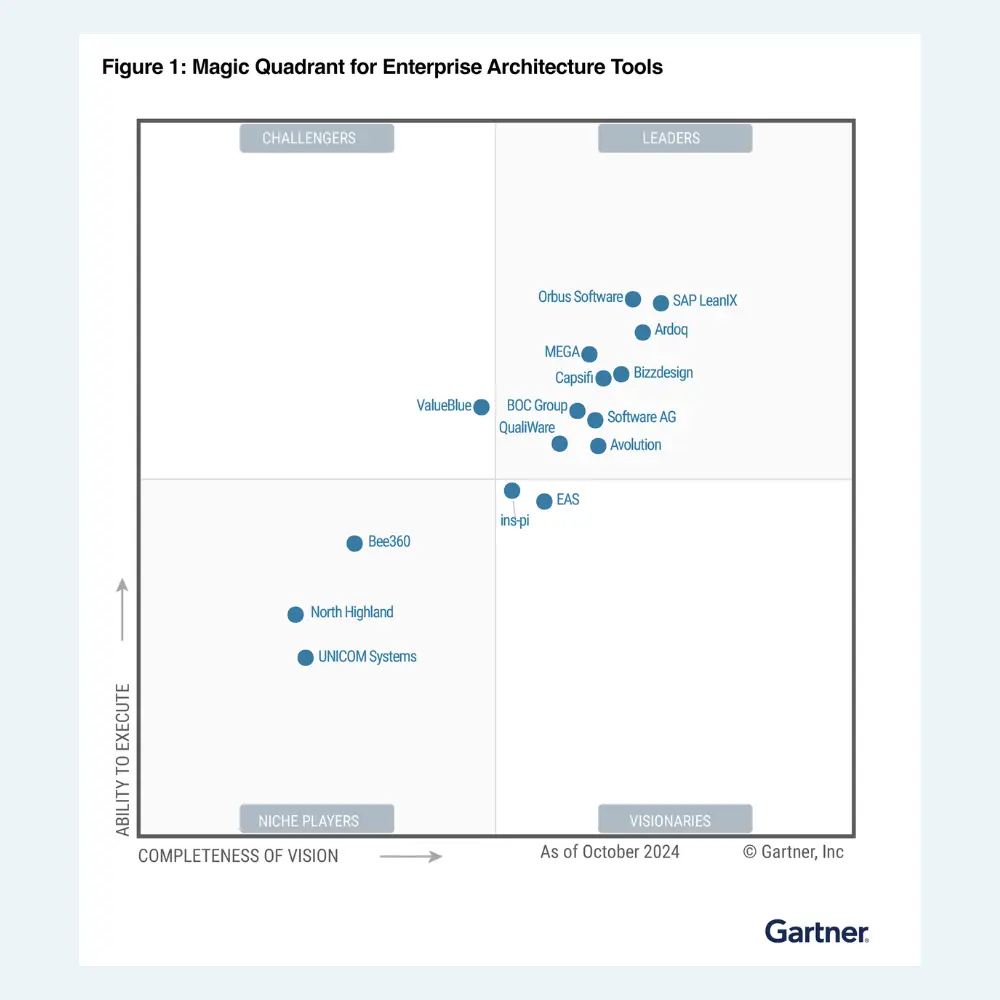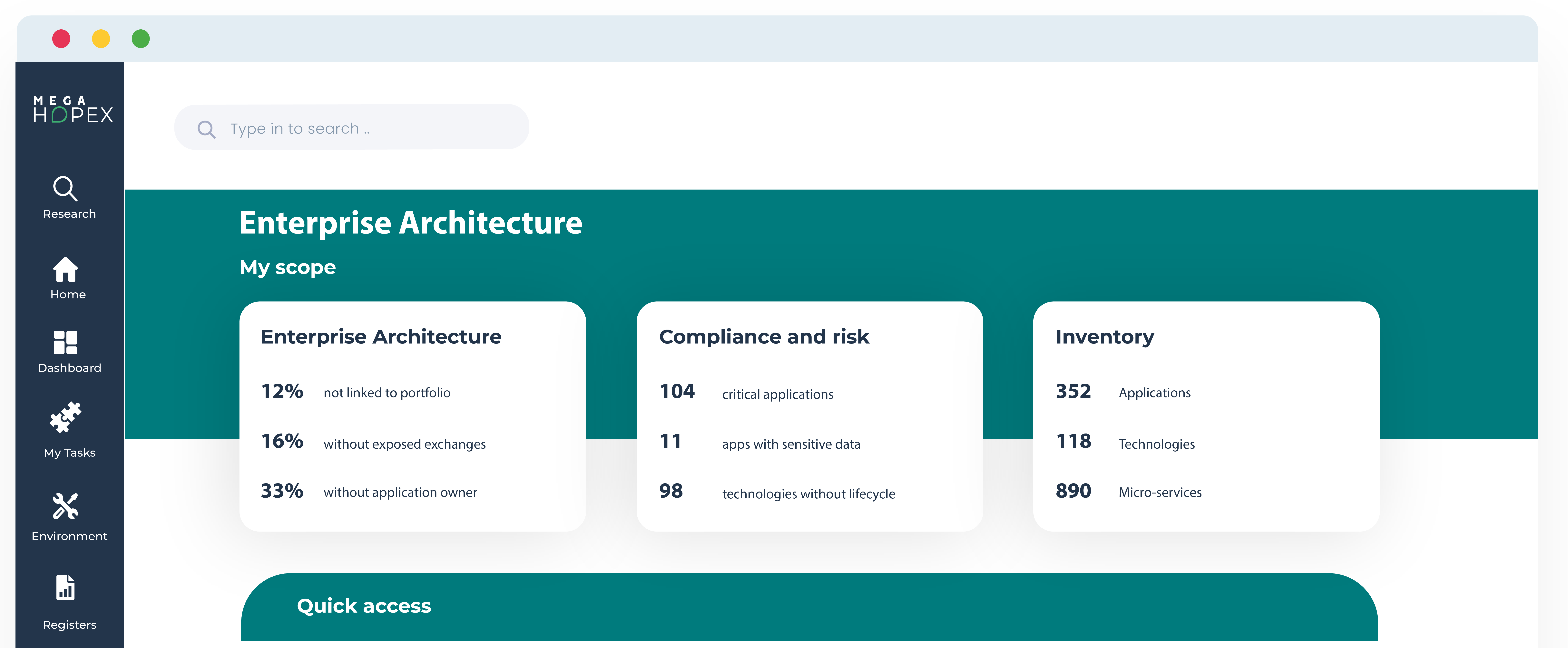
Microservices Architecture: A Comprehensive Guide
The digital landscape is evolving rapidly, necessitating businesses to adopt agile, scalable, and efficient approaches to software development.
Microservices architecture emerges as a beacon of innovation, allowing organizations to develop and manage their applications as a collection of loosely coupled services. This comprehensive guide delves into the intricacies of microservices architecture, exploring its definition, components, benefits, and implementation strategies.
What are Microservices?
Microservices are a software architecture style that structures an application as a collection of loosely coupled services designed to implement a specific business function or process. This approach allows an application to be developed, deployed, and scaled as a suite of small, independent services. Each microservice runs in its process and communicates with other services through well-defined APIs.
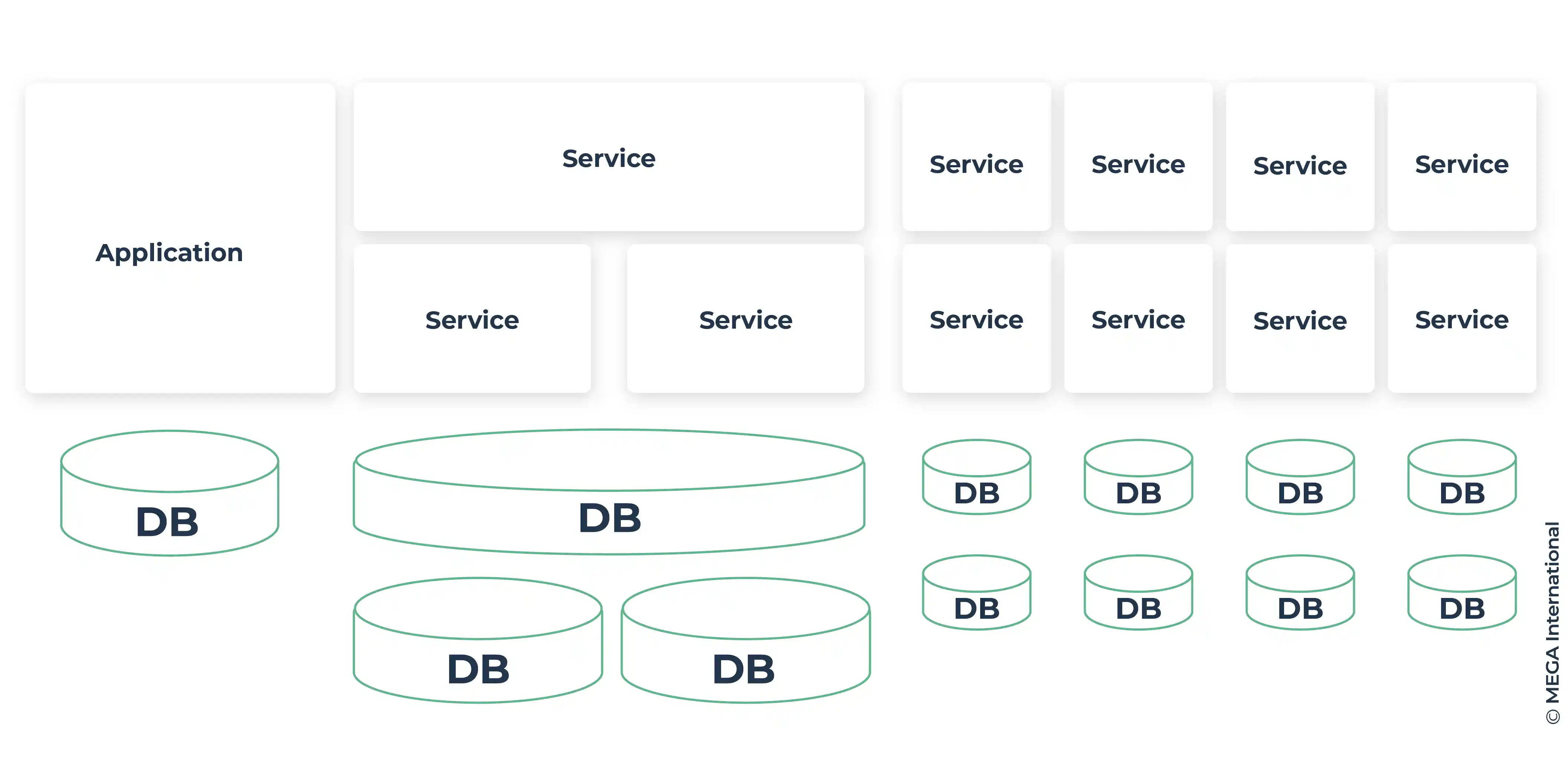
Different teams can develop, deploy, and scale these services independently, enabling more flexible development cycles, quicker innovation, and the ability to scale parts of an application independently according to demand.
What is Microservices Architecture?
Microservice architecture develops software systems divided into small, independent services, each running its process and communicating through lightweight mechanisms. This approach enables the rapid, reliable, and frequent deployment of large, complex applications.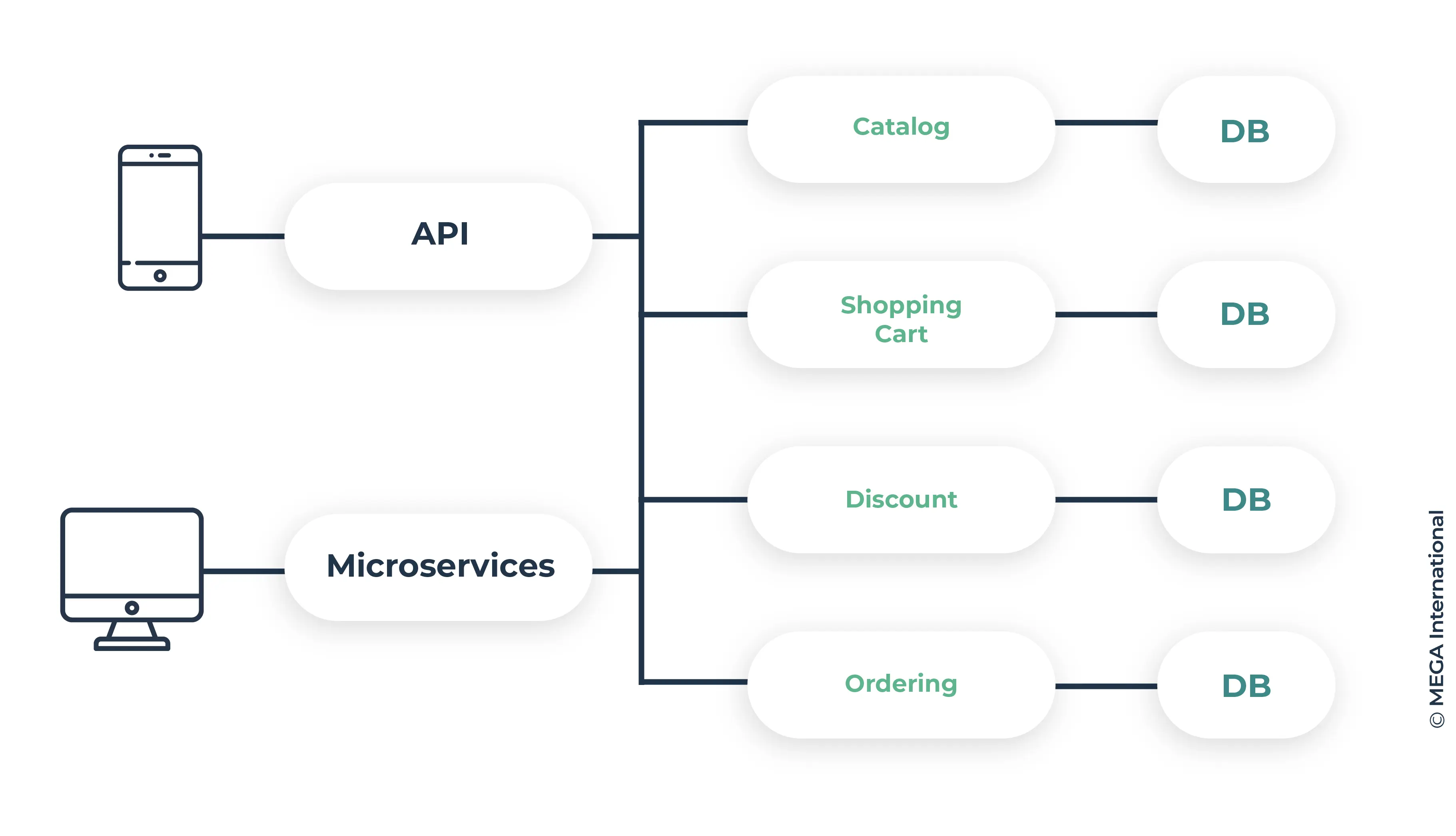
Characteristics of Microservices
Key Features
- Decentralization: Each service in a microservices architecture operates independently.
- Scalability: Services can be scaled independently, allowing for more efficient resource use.
- Flexibility: Different technologies can be used for different services, facilitating the use of the best tool for each task.
Components of Microservice Architecture
Microservices architecture is a design approach in which an application is developed as a collection of small, autonomous services, each performing a unique function and communicating over a network.
This architectural style is distinguished by its focus on building software applications as a suite of independently deployable, modular services. Understanding the components constituting a microservices architecture is essential for effectively implementing this approach. Here are the key elements:
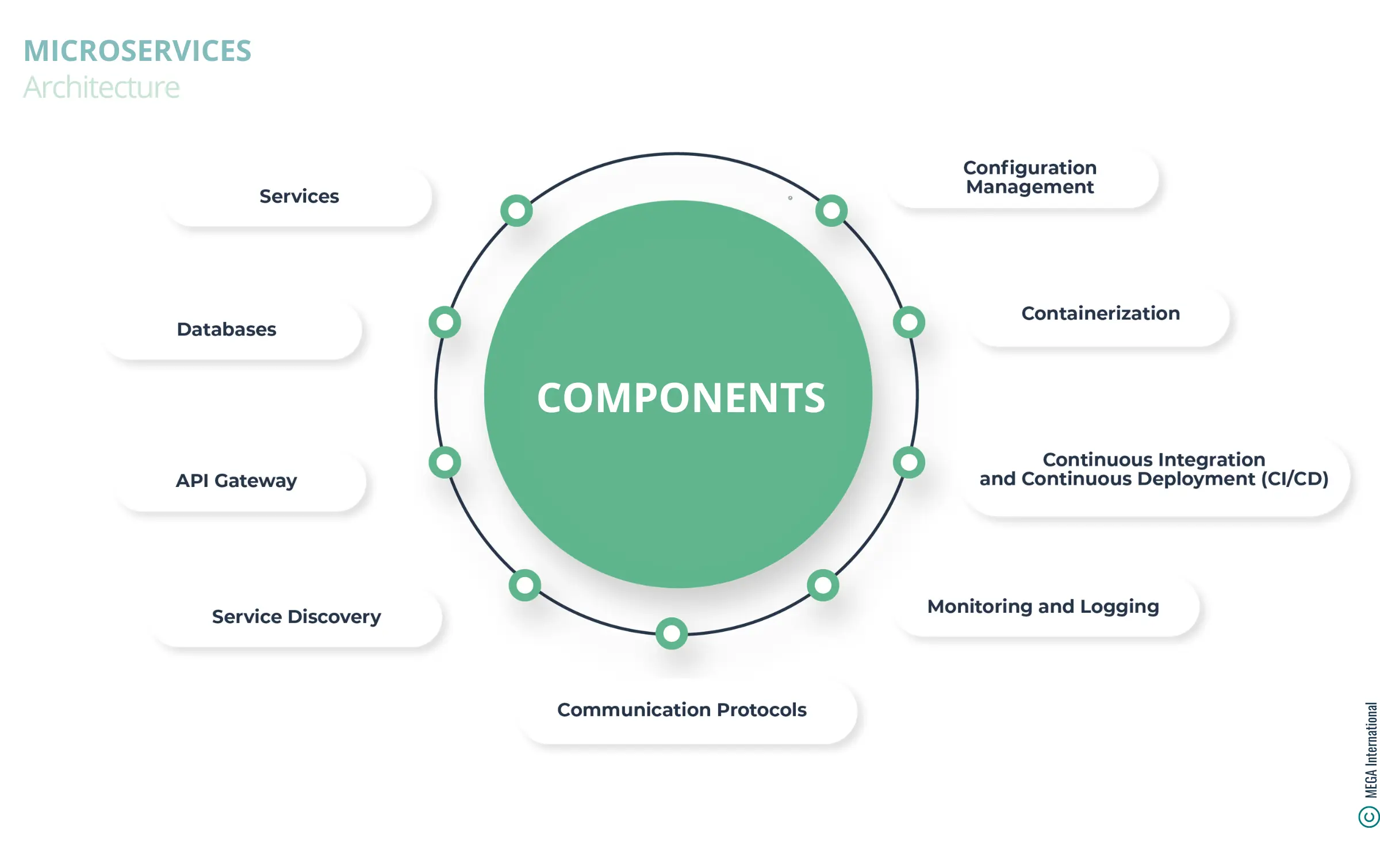
1. Services
The core component of microservice architecture is the services themselves. Each service is designed to accomplish a specific task or function and can operate independently of the others.
Services are loosely coupled, meaning changes to one service should not directly impact the functionality of another. They encapsulate specific business logic and data and can be developed, deployed, and scaled independently.
2. Databases
Each service typically manages its database in a microservice architecture, allowing for data autonomy and ensuring that database dependencies do not hinder its operations. This approach, known as database per service, helps isolate the services, improve fault tolerance, and allow the use of different database technologies suited to each service's needs.
3. API Gateway
The API Gateway is the entry point for clients to access the application's services. It is responsible for routing requests to the appropriate microservice, aggregating the results, and returning them to the requester.
The API Gateway can also handle cross-cutting concerns such as authentication, SSL termination, and rate limiting, thereby simplifying the client's interaction with the microservices.
4. Service Discovery
Service discovery is a critical component in microservices architecture, enabling services to discover and communicate with each other dynamically.
This is essential because, in a cloud environment, services can frequently change locations and IP addresses. Service discovery mechanisms ensure that these services can locate and communicate with one another reliably.
5. Communication Protocols
Communication between microservices is a fundamental aspect of microservice architecture. This communication can be synchronous (e.g., HTTP, REST, gRPC) or asynchronous (e.g., messaging queues like RabbitMQ or Apache Kafka).
The choice of communication protocol depends on the application's specific requirements, such as response time, reliability, and scalability.
6. Configuration Management
Configuration management tools help manage the configurations of the various centralized services. This is crucial for maintaining consistency across environments and simplifying the management of service configurations, especially as the number of services grows.
7. Containerization
Containerization technologies like Docker and Kubernetes play a significant role in microservices architecture.
They provide a lightweight, consistent environment for deploying and running services, making it easier to manage lifecycle issues, scale services, and ensure that the application runs the same way in development, testing, and production environments.
8. Continuous Integration and Continuous Deployment (CI/CD)
CI/CD practices are integral to microservices architecture, enabling frequent and reliable delivery of individual service updates.
Continuous integration involves automatically testing and building services upon code changes, while continuous deployment automates the deployment of services to production. This facilitates a more agile development process and quicker release cycles.
9. Monitoring and Logging
Given the distributed nature of microservices, monitoring, and logging are essential for observing the health of services, diagnosing issues, and understanding the application's behavior.
Tools and platforms that offer centralized logging and application performance monitoring (APM) are commonly used to manage these tasks.
Benefits of Microservices Architecture
Here are the primary benefits of adopting a microservices architecture:
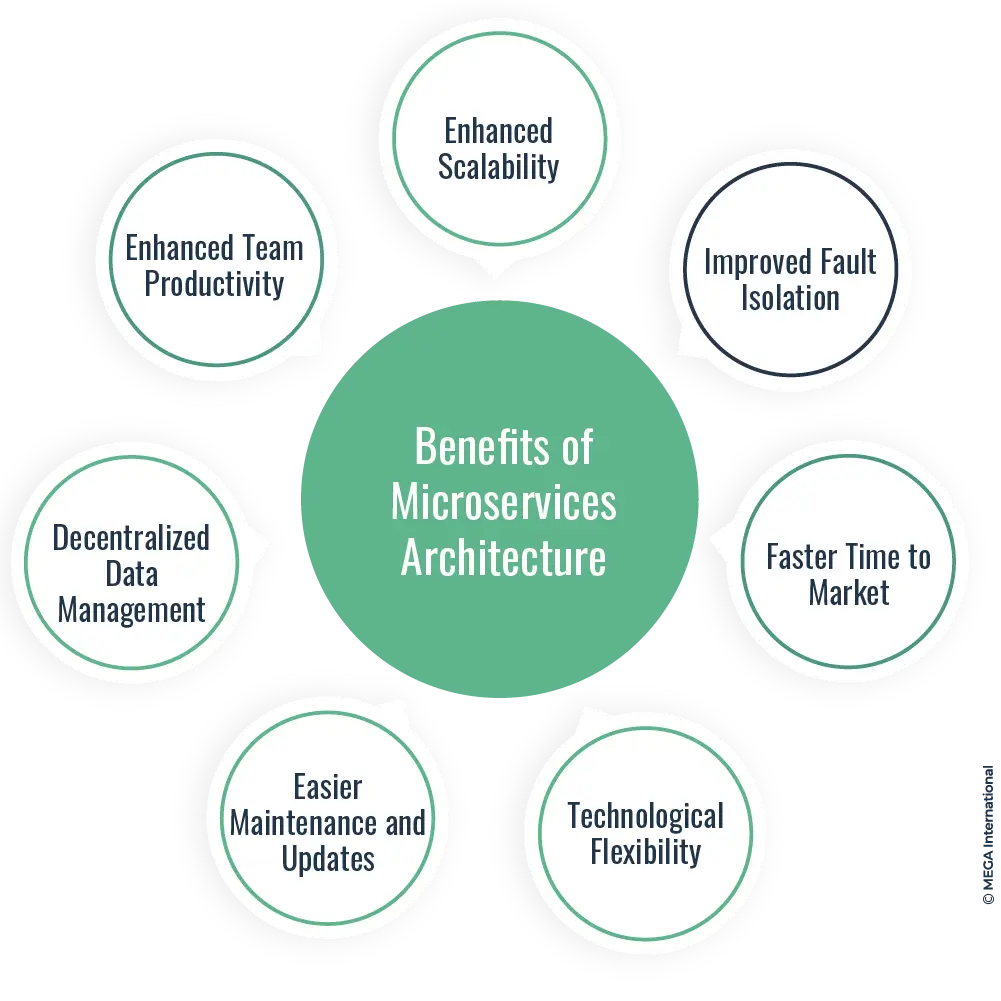
1. Enhanced Scalability
One of the standout features of microservices architecture is its scalability. Since applications are broken down into more minor, independently deployable services, each can be scaled autonomously. This means that as demand for a particular function of an application increases, only the related service needs to be scaled up without the need to scale the entire application. This improves efficiency and significantly reduces costs associated with under or over-utilizing resources.
2. Improved Fault Isolation
In a microservices architecture, services are isolated from each other. This isolation means that if one service fails, it does not necessarily cause the entire system to fail. This compartmentalization enhances the overall resilience of the application, as issues can be contained and addressed without impacting other services. This leads to higher availability and reliability of the application, which is critical for maintaining user trust and satisfaction.
3. Faster Time to Market
Thanks to their independence, microservices enable teams to work on different services simultaneously. This parallel development significantly reduces the time it takes to introduce new features or update the application. Moreover, since services are smaller and more focused, they can be developed, tested, and deployed more quickly than in monolithic architectures. This agility allows businesses to respond faster to market changes or customer needs, providing a competitive edge.
4. Technological Flexibility
With microservices, each service can be built using the most appropriate technology stack for its specific requirements rather than being tied to a single technology stack for the entire application. This flexibility allows development teams to experiment with new technologies, frameworks, or programming languages for different services, fostering innovation and potentially leading to more efficient solutions.
5. Easier Maintenance and Updates
The more minor, more focused nature of microservices simplifies maintenance and updates. Changes can be made to a single service without affecting the rest of the application, making managing bug fixes, updates, and improvements easier. This reduces the risk associated with changes and allows for more frequent updates, keeping the application fresh and aligned with user needs.
6. Decentralized Data Management
Microservices architecture allows each service to manage its database, which can be optimized according to its specific needs. This decentralized data management approach enhances the services' performance and scalability, as each service can use the most efficient database type and schema. It also helps isolate and protect data, improving the application's security.
7. Enhanced Team Productivity
Adopting a microservices architecture can lead to increased team productivity. Since services are independent, smaller teams can take ownership of individual services, reducing coordination overhead and enabling more focused and efficient development. This autonomy encourages innovation and accountability, as teams have more control over their service and can see the direct impact of their work.
Microservices Architecture challenges
While microservices architecture offers significant benefits, it also presents challenges. These challenges can impact an application's development, deployment, and operational phases. Understanding these challenges is crucial for organizations considering adopting a microservices architecture. Here are some of the primary challenges associated with microservices:
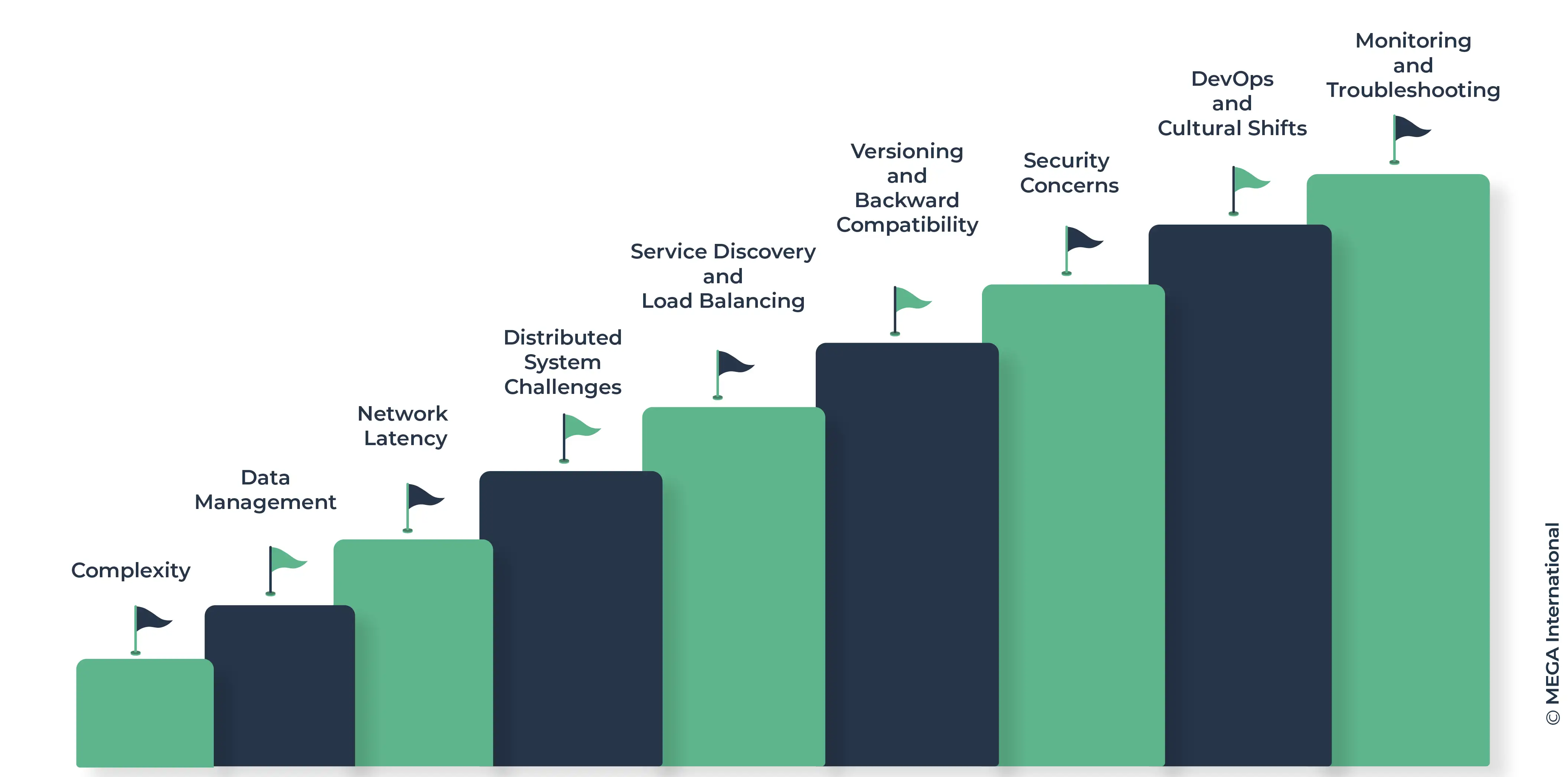
1. Complexity
One of the most significant challenges of microservices architecture is the increased complexity it introduces. Managing dozens or even hundreds of services can be daunting compared to a single, monolithic application. This complexity extends to various aspects of the development and operational processes, including deployment, monitoring, and managing inter-service communication.
2. Data Management
In a microservices architecture, each service typically manages its database, leading to challenges in ensuring data consistency and integrity across services. Implementing transactions that span multiple services adds another layer of complexity, often requiring patterns such as Saga to maintain data consistency without tight coupling between services.
3. Network Latency
Communication between services over a network introduces latency, which can affect the performance of microservices-based applications. The overhead of handling requests between services, especially in synchronous communication scenarios, needs careful management to avoid significant performance bottlenecks.
4. Distributed System Challenges
Microservices architecture is essentially a distributed system, which introduces challenges such as network failures, service availability issues, and the complexity of distributed data management. Designing for failure becomes critical, requiring strategies like circuit breakers, retries, and fallbacks to ensure system resilience.
5. Service Discovery and Load Balancing
Dynamic service discovery and load balancing become critical, with services frequently scaling up or down and potentially moving across servers or containers. Implementing an efficient service discovery mechanism ensures services can find and communicate with each other, while load balancing helps distribute traffic evenly across instances of a service.
6. Versioning and Backward Compatibility
As services are independently deployed, managing version compatibility becomes a challenge. Ensuring that changes to a service do not break compatibility with other services that depend on it requires careful API versioning strategies and backward compatibility considerations.
7. Security Concerns
Securing a microservices architecture involves securing each service and the communications between them. Implementing consistent security policies, authentication, and authorization across services adds complexity. There's also the challenge of protecting sensitive data as it flows between services.
8. DevOps and Cultural Shifts
Adopting microservices often requires a significant shift in culture and processes, embracing DevOps practices for continuous integration, deployment, and automated testing. Organizations must invest in training and tools to facilitate this shift and ensure teams can effectively manage the lifecycle of numerous independent services.
9. Monitoring and Troubleshooting
Effective monitoring and troubleshooting have become more challenging in a microservices architecture due to the distributed nature of services. Implementing a centralized logging and monitoring solution that can handle the complexity of tracking issues across services is essential for maintaining visibility into system health and performance.
Despite these challenges, many organizations find that the benefits of microservices outweigh the difficulties, especially for large-scale, complex applications that require agility and scalability.
Get a complimentary copy: 2024 Gartner® Magic Quadrant™ for Enterprise Architecture Tools
Implementing Microservices
Implementing microservices architecture is a significant shift from traditional monolithic application development, requiring a strategic approach, adherence to best practices, and the selection of appropriate tools and technologies. This implementation can lead to more scalable, flexible, and independently deployable services. Here's how to navigate the implementation process effectively.
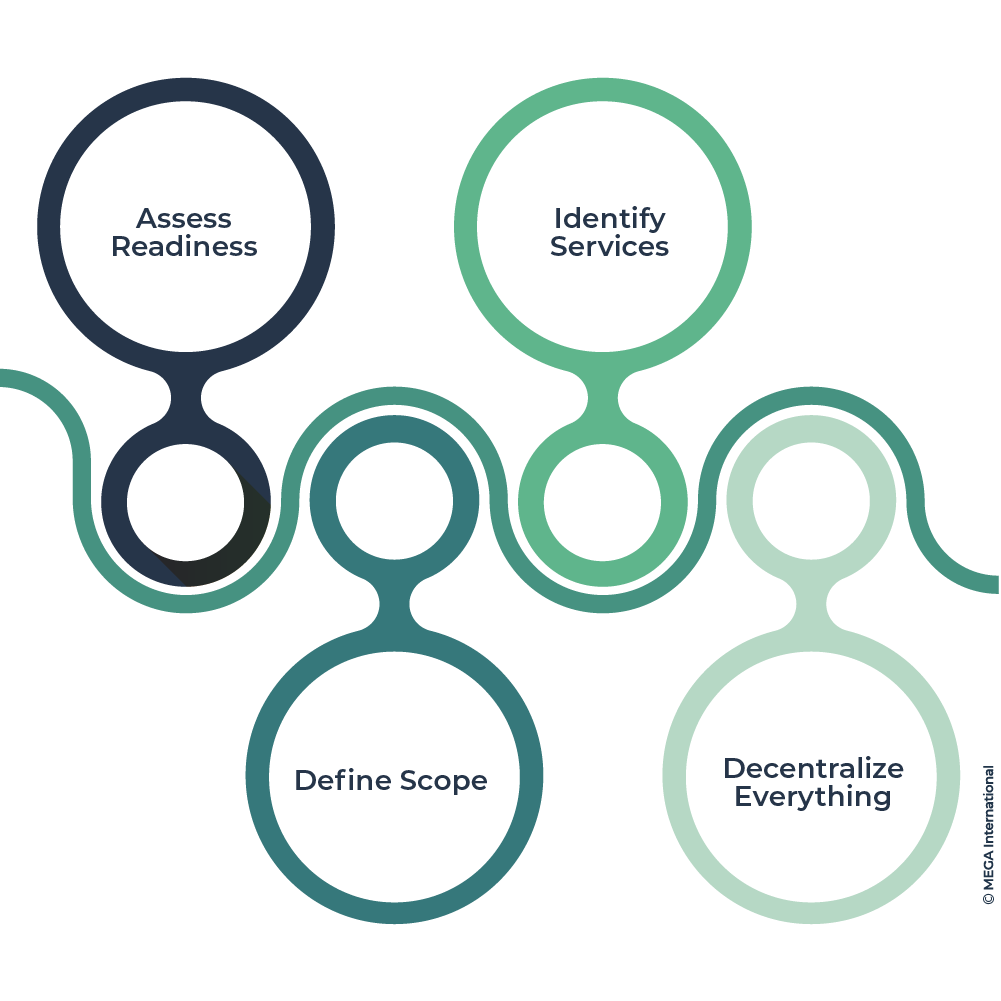
Strategy
The transition to microservices starts with a solid strategy that aligns with the organization's business goals and technical capabilities.
Assess Readiness: Evaluate your organization's readiness for the shift, considering technical and cultural aspects. This includes the team's familiarity with microservices, DevOps practices, and the existing infrastructure.
Define Scope: Start by clearly understanding which parts of the application or business functionality will benefit most from being broken into microservices. It's often recommended to start small with a single module or service.
Identify Services: Break down the application into services based on business capabilities. Each service should have a bounded context and be independently deployable.
Plan for Change: Prepare for organizational and process changes. Microservices require a shift towards a DevOps culture, with cross-functional teams responsible for the full lifecycle of their services.
Best Practices
Following best practices can mitigate some of the inherent challenges of microservices and enhance their benefits.
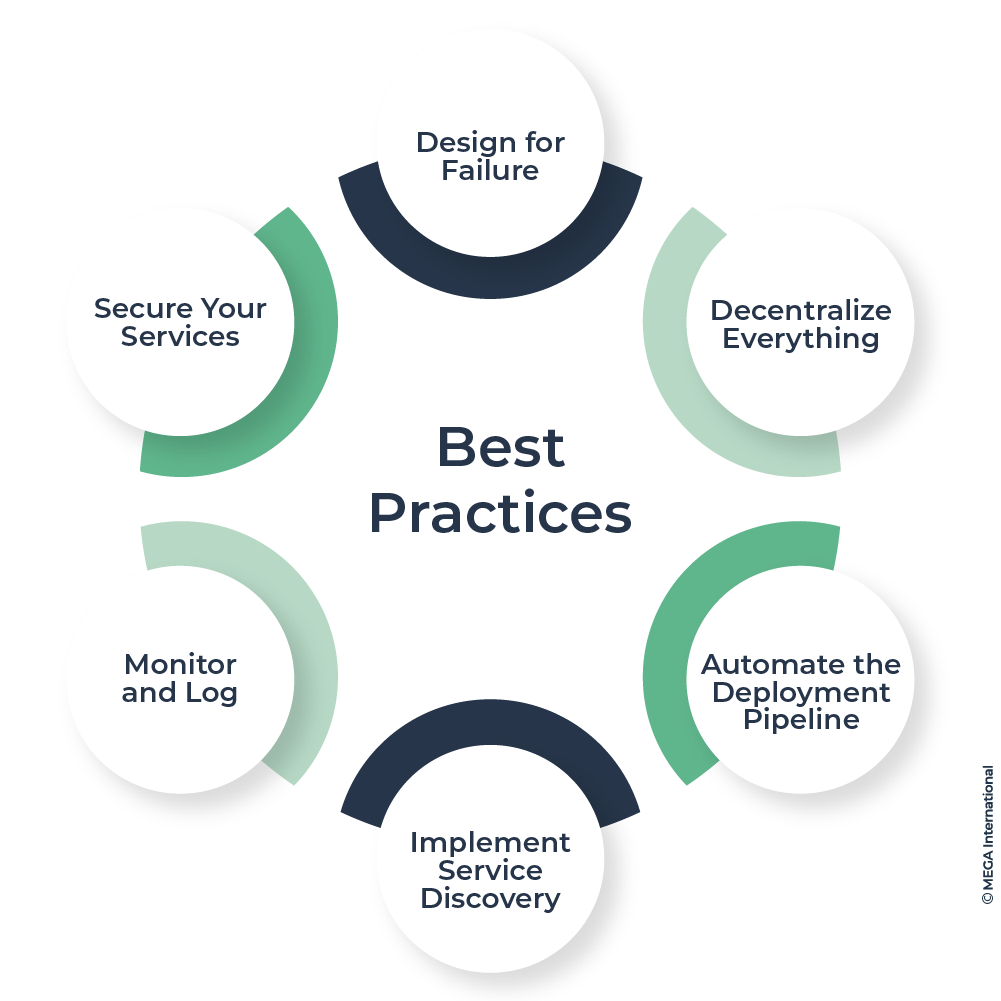
- Design for Failure: Assume that failures will happen and design services to be resilient. Use strategies like circuit breakers, retries, and fallbacks to handle partial failures gracefully.
- Decentralize Everything: Encourage decentralization of data management, configuration, and decision-making. This approach enhances agility and resilience.
- Automate the Deployment Pipeline: Invest in continuous integration and deployment (CI/CD) to automate microservices' testing, building, and deployment. Automation is critical to managing the increased complexity of deploying and maintaining multiple services.
- Implement Service Discovery: Use service discovery tools to enable services to dynamically discover and communicate with each other, addressing the challenge of service location in dynamic environments.
- Monitor and Log: Implement comprehensive monitoring and logging to track service health and performance. Centralized logging and monitoring solutions are essential for troubleshooting and understanding system behavior.
- Secure Your Services: Ensure robust security measures, including secure communication between services, authentication, and authorization.
Tools and Technologies
Many tools and technologies support microservices' development, deployment, and management.
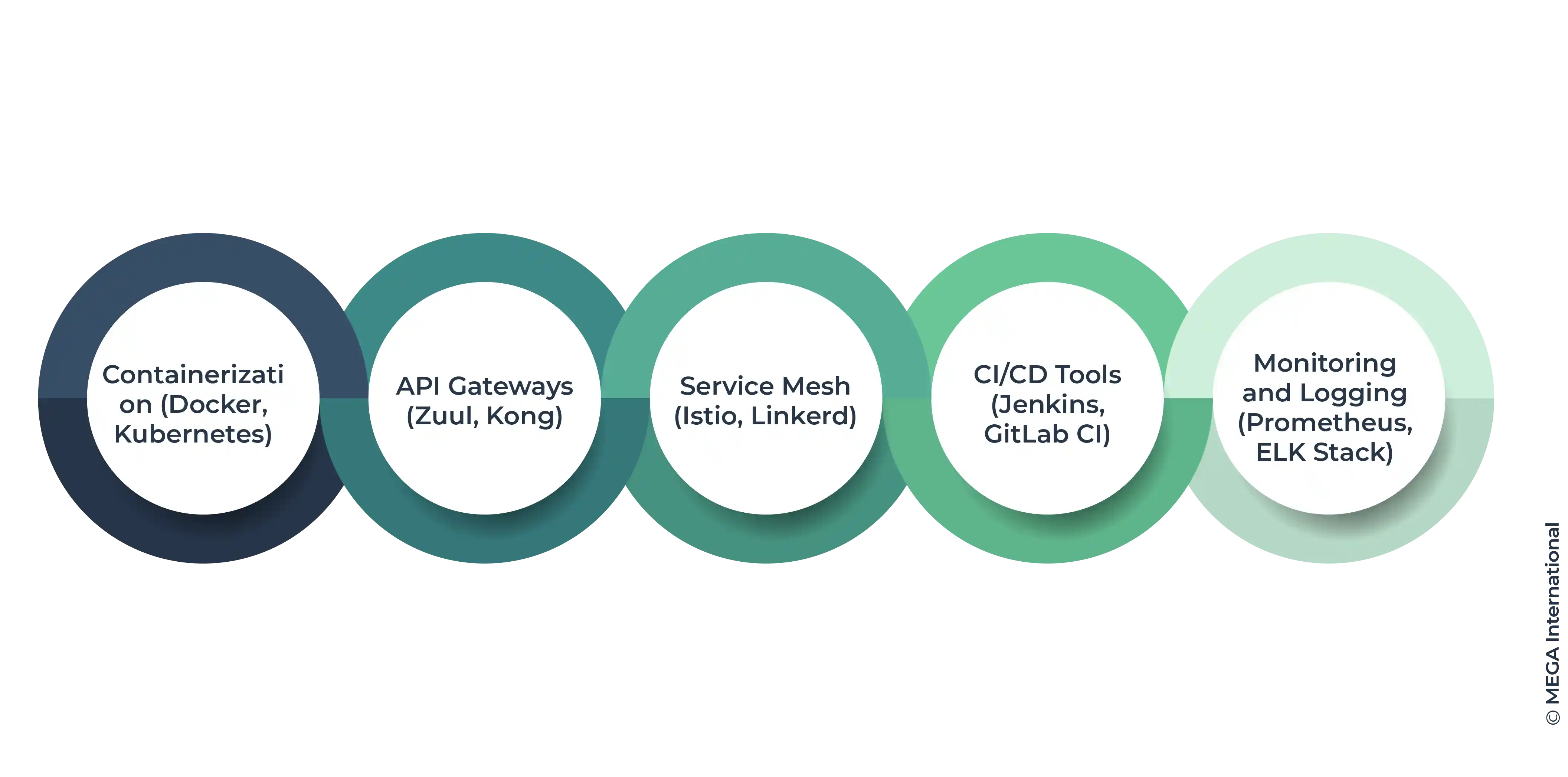
- Containerization (Docker, Kubernetes): Containers encapsulate microservices and their dependencies, making them easier to deploy and scale. Kubernetes offers orchestration capabilities and manages containerized applications' deployment, scaling, and operation.
- API Gateways (Zuul, Kong): An API gateway acts as the single entry point for all client requests, routing them to the appropriate microservice while providing cross-cutting concerns like authentication, SSL termination, and rate limiting.
- Service Mesh (Istio, Linkerd): A service mesh provides a transparent and language-independent way to flexibly and efficiently handle service-to-service communication, including service discovery, load balancing, encryption, and observability.
- CI/CD Tools (Jenkins, GitLab CI): Continuous integration and continuous deployment tools automate the testing, building, and deployment processes, which are essential for managing multiple microservices.
- Monitoring and Logging (Prometheus, ELK Stack): Monitoring tools like Prometheus and logging solutions like the ELK (Elasticsearch, Logstash, Kibana) Stack help observe and diagnose issues across microservices.
Case Studies
The transition to microservices architecture has been a transformative journey for many organizations, from startups to global enterprises.
Examining case studies of those who have successfully navigated this shift provides valuable insights and lessons that can guide others in their microservices implementation. Here are some success stories and the lessons learned through the process.
Success Stories
Netflix
Netflix is often cited as the quintessential success story in the microservices world. The company transitioned from a monolithic to a microservice architecture to manage its rapidly growing user base and the increasing demand for streaming services. This shift enabled Netflix to achieve unparalleled scalability, allowing it to deploy hundreds of services that can be independently scaled and updated, leading to improved performance, resilience, and faster feature development.
Amazon
Amazon transformed its application from a monolithic architecture into a microservices approach to support its vast and varied operations. This transition was crucial for handling millions of transactions and providing a seamless shopping experience to its customers worldwide. By adopting microservices, Amazon was able to accelerate deployment cycles, improve scalability, and enhance the reliability of its services.
Twitter now X
X moved to microservices to address scalability issues from its monolithic architecture, which struggled to handle the massive volume of tweets. The shift to microservices allowed X to manage its data more effectively, improve site reliability, and accommodate the growing number of users and tweets without significant downtime or performance issues.
Lessons Learned
Start Small and Expand Gradually
One common lesson from successful microservices implementations is the importance of starting small. Rather than attempting a full-scale migration, these companies began with a single service or a small set of services. This approach allows teams to learn and adapt their strategy as they scale up their microservice architecture.
Organizational and Cultural Shifts Are Crucial
Adopting microservices is not just a technological shift but also requires significant organizational and cultural changes. Companies like Netflix and Amazon emphasize the importance of a DevOps culture, where development and operations teams collaborate closely. This shift encourages ownership, accountability, and a focus on continuous improvement.
Embrace Automation
Successful microservices implementations leverage automation for testing, deployment, and scaling. Automation is critical in managing the complexity of deploying and operating multiple services. Tools for continuous integration and continuous deployment (CI/CD), container orchestration, and automated monitoring and alerting are essential components of a flourishing microservices ecosystem.
Design for Failure
Microservices architectures introduce complexities, including network issues, service failures, and latency. Successful companies design their systems with the assumption that failures will occur. Implementing patterns like circuit breakers, retries, fallbacks, and decentralized data management helps ensure the system remains resilient despite failures.
Invest in Monitoring and Observability
Monitoring and observability are paramount in microservices architectures to understand the system's state and identify issues quickly. Successful case studies highlight the need for comprehensive monitoring, logging, and tracing tools that provide visibility into the health and performance of each microservice and the system.
Security Must Be a Priority
With the increased attack surface microservices present, security becomes even more critical. Implementing robust authentication, authorization, and secure communication between services is essential. Successful implementations often use API gateways and service meshes to manage security policies consistently across services.
Future of Microservices
As digital transformation accelerates across industries, microservice architecture continues to evolve, shaping the future of software development and deployment. Understanding the trends and predictions in this space can help organizations stay ahead of the curve and leverage microservices more effectively.
Trends
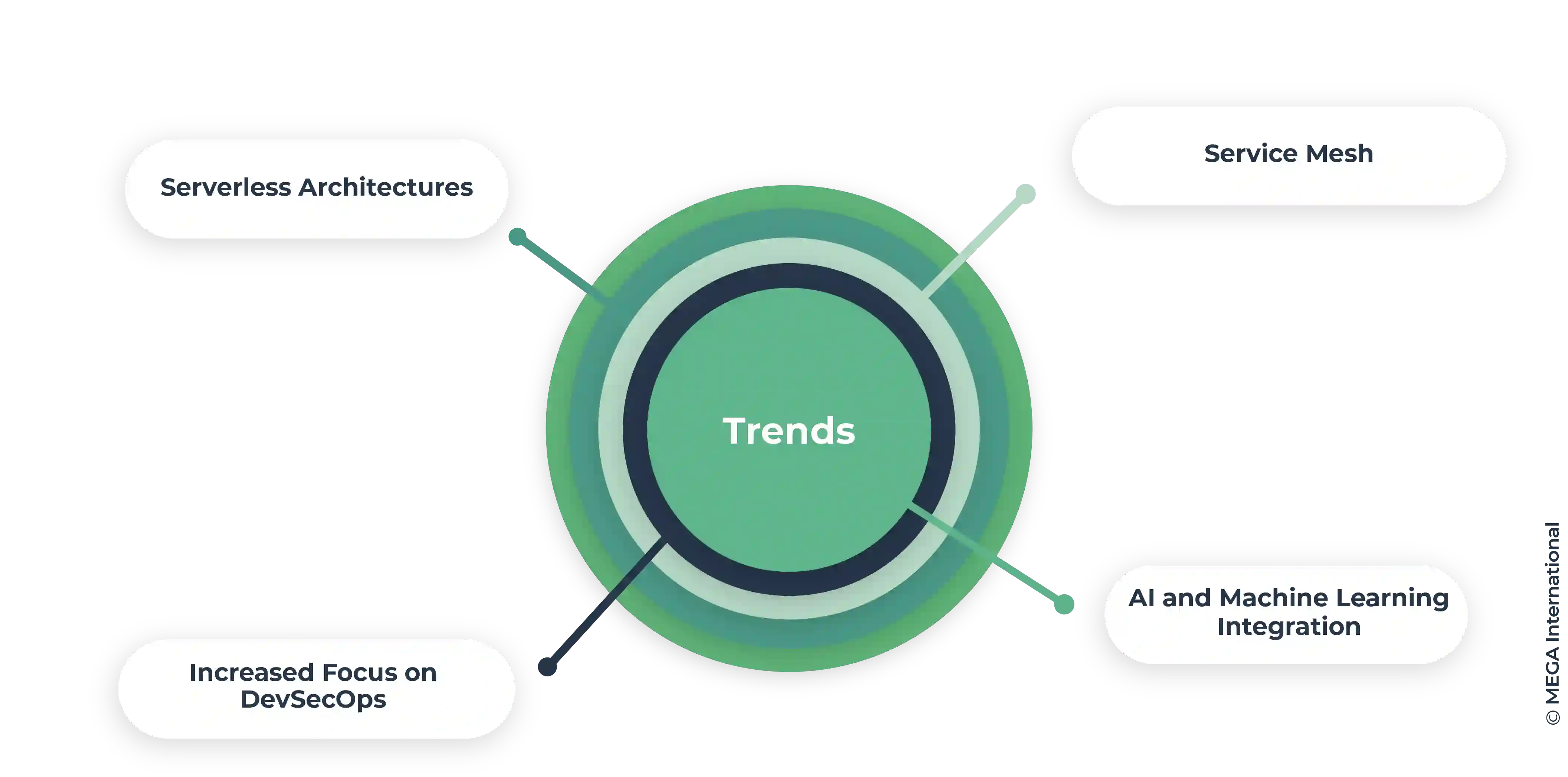
Serverless Architectures
The rise of serverless computing is a significant trend impacting microservices. Serverless architectures allow developers to build and deploy services without managing the underlying infrastructure, focusing solely on the business logic. This model complements microservices by reducing operational complexity and enhancing scalability and cost-efficiency.
Service Mesh
The complexity of managing inter-service communications in a microservices architecture has led to the increased adoption of service mesh technologies, such as Istio and Linkerd. These tools provide a dedicated infrastructure layer for handling service-to-service communication, making securing, managing, and observing inter-service interactions easier.
AI and Machine Learning Integration
Integrating AI and machine learning into microservices is becoming more common. This integration enables more intelligent and adaptive applications, from personalized user experiences to automated decision-making processes. As AI and ML technologies advance, their incorporation into microservices will likely increase, offering new capabilities and efficiencies.
Increased Focus on DevSecOps
Security is a critical concern in microservices architectures, increasing the emphasis on DevSecOps practices. This approach integrates security measures into the entire application lifecycle, from design to deployment, ensuring that each microservice is built with security in mind. This trend towards more secure development practices is expected to grow, with tools and methodologies evolving to support this integrated approach.
Predictions
Widespread Adoption Across Industries
Microservices architecture will likely see wider adoption across various industries, including finance, healthcare, retail, and more. Its benefits in terms of scalability, flexibility, and speed of deployment make it an attractive option for businesses undergoing digital transformation.
Standardization of Microservices Practices
As microservices continue to mature, there's a potential for increased standardization of practices and tools. This standardization could lead to more uniform approaches to designing, deploying, and managing microservices, making it easier for organizations to adopt and benefit from this architecture.
Growth of Microservices Platforms
The future may see the growth of comprehensive microservices platforms that offer end-to-end solutions for developing, deploying, and managing microservices. These platforms could simplify the adoption of microservices architecture by providing integrated tools and services that address common challenges.
| The adoption of microservices architecture represents a significant shift in how applications are developed, deployed, and managed, offering numerous benefits that can drive innovation, agility, and scalability within organizations. However, this architectural style also introduces challenges businesses must navigate to realize their full potential. |
Final Thoughts
Carefully considered based on an organization's needs, capabilities, and goals. The journey towards microservices involves technological changes and a significant shift in organizational culture and processes. As the landscape continues to evolve, staying informed about emerging trends and challenges will be crucial for organizations looking to harness the full power of microservices.
In conclusion, microservice architecture offers a promising path for organizations aiming to build flexible, scalable, and resilient applications. By adopting a strategic approach, focusing on best practices, and leveraging the right tools and technologies, businesses can navigate the complexities of microservices and achieve a competitive edge in the digital era.
FAQs
Microservices communicate through APIs using HTTP, gRPC, or messaging queues. Service instances discover each other dynamically using service discovery mechanisms to enable communication across services in a distributed system.
- Complexity: Managing multiple services introduces deployment, scaling, and monitoring complexity.
- Data Management: Ensuring data consistency across services, especially in transactions spanning multiple services, is challenging.
- Network Latency: Inter-service communication can introduce latency, impacting performance.
- Security: Securing a distributed microservices system requires robust authentication and secure communication protocols, posing complexity compared to monolithic architectures.
Microservices architecture is an architectural style that structures an application as a collection of microservices, which are small, independent services that communicate over well-defined APIs. This approach allows for developing an application as a suite of small services, each running in its process and independently deployable.
The benefits of microservices architecture include improved scalability, flexibility, maintainability, and resilience. It enables faster development cycles, easier deployment of updates, and better fault isolation.
In a monolithic architecture, the entire application is built as a single unit, while in microservices architecture, the application is divided into more minor, loosely coupled services. This allows for independent development, deployment, and scaling of individual services.
An API gateway is a single entry point from which clients can access various microservices. It facilitates routing, authentication, load balancing, and caching of requests, simplifying the client-side experience and ensuring security and reliability in a microservices' environment.
The transition from a monolithic application to microservices architecture involves breaking down the monolith into minor services, identifying business boundaries, establishing communication between services, and gradually refactoring the application to a more modular and scalable structure.
Microservices patterns include service discovery, circuit breakers, API gateways, and event-driven communication. These patterns help address service communication, fault tolerance, and scalability in microservices.
Enterprise Architecture Related Content
Shift from a documentation tool to an operational tool and accelerate business transformation
MEGA HOPEX for Enterprise Architecture
Request a demonstration of HOPEX for EA, and see how you can have immediate value of your projects.








